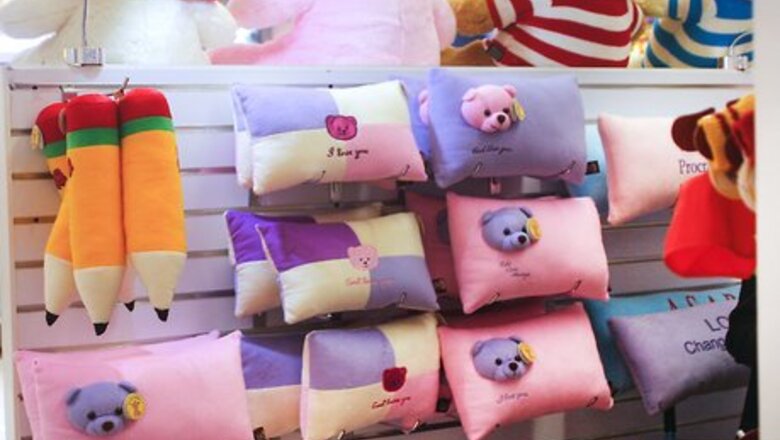
views
Selecting bears for collecting
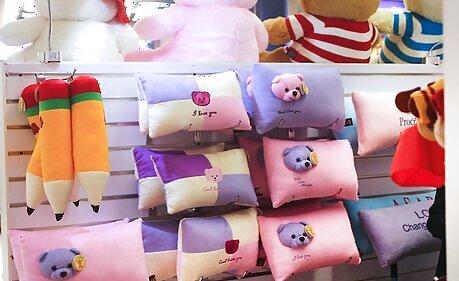
Decide what type of collection you're interested in having. This may be dependent on your interests, whether you've a sentimental or a purposeful collecting intention in mind, and on your budget. Ultimately, the why and the how you collect teddy bears is totally up to you; it is only when you want to ensure that your collection is very valuable that you need to pay more attention to some of the "rules" about careful collecting. Some examples of possible ways to collect teddy bears include: Collect teddies that you like. These don't need to be valuable, just appealing and kept in great condition. They can be bears from Build-a-bear or similar "make a bear" companies, they can be any teddy bear that you happen to like. While categorizing a bear collection is right for some people, being eclectic in your bear choices or driven to own as many teddy bears as possible are just as valid reasons for your collecting style as honing in on a particular type or style of bear. Collect teddies with sentimental value. This means keeping the teddy bears that you and other family members have had over the years. Even better if the teddies come with photos of original owners, events such as bear picnics, etc. Collect teddies which have value from the start. For example, Steiff bears, Boyd Bears, Bearington bears, Vermont Teddy Bears, Mary Meyers, Gund, or Care Bears. Collect teddies that you think will become valuable eventually. This could be a crossover with bears that you like or an addition to collecting already valuable bears. Collect store teddies. Many stores have their own teddy bears, often for special occasions such as a holiday season, a celebration of the store's history or because it's a famous toy store (such as Hamley's of London) and they just like having their own brand of teddy bears. This can be a fun collection in its own right, and gives you an excuse to browse a few stores. Collect miniature bears. The advantage of this collection is not only its cute factor but its small size; it's a lot easier to store and display smaller teddies. There are early versions from Steiff and Schuco, many hand-crafted versions from artisan stores and markets, and lots of versions from different decades. Collect dressed bears. These are bears with clothes, and the clothes can be a point of interest as much as the bears. Bear artists often dress bears, and you'll also find both vintage and modern clothed bears, depending on your preference. Collect special edition bears. These began being issue around the 1980s, especially as major teddy bear manufacturers began celebrating milestones. Special editions are also issued by companies such as Disney. Collect travel bears. This could be a collection based on buying teddy bears whenever you travel. You'll need to decide what the parameters are, such as a teddy from each city or country, only collectible teddies, or deliberately going to a place known for making teddies, etc. If you love travel and teddy bears, it's a great way to combine both passions. Collect bears made by teddy bear artists. What defines who is a teddy bear artists is arguable but at the very least, look for quality, originality, individualist creations that will stand the test of time. Liking the creation is an absolute plus. Collect all things "teddy bear". In others words, not just the teddy bears but also other items which have teddy bear designs or shapes, such as china figurines, posters, clothing, cards, key-rings, etc. Collect bears with a "story" behind them. For example, bears which have survived certain historical events, bears that come from famous owners, bears that have helped their owners cope with life in some way, etc.
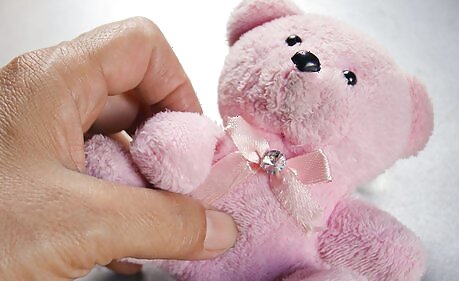
Learn as much as you can about collecting the type of teddy bear you're collecting. This is important because it helps you to work out whether you're paying a fair price for teddies you want to add to your collection, along with knowing what to look for by way of tags, accessories, etc. Grab hold of a teddy bear identifier or guide. This should be a book with really good photographs of the teddy bear types, along with detailed information about the background (the manufacturer, date, country of origin, height, etc.) and other information that helps you to identify the bears. Get a few of these, if possible, from different decades, as things change over time and even up-to-date books may be missing some vital information. Visit a library or a specialist collection rather than attempting to buy lots of these books––unless you want to, of course (a collection possibility of its own). Unfortunately, as with any area of collectibles, there are fakes when the stakes are high. By knowing what things should form part of the teddy bear, you are more likely to know how to spot fake teddy bears than someone who hasn't done their homework.
Sourcing teddy bears
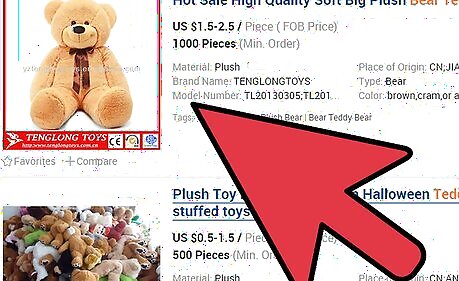
Buy teddy bears direct from the manufacturer or retailer. For modern bears that are still being produced, these sources are your best option. Always keep your purchase receipts/purchase trail; if you find any problems with the teddy bear after purchasing, you can return the bear and either ask for it to be replaced or fixed, as appropriate.
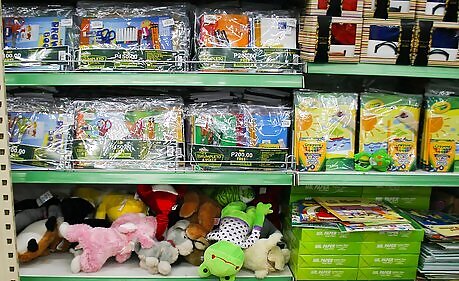
Check out antique stores, flea markets, thrift stores, etc. for older bears. You never know what you might find in any of these sources, so this involves a lot of rummaging, hit-and-miss and hope. However, it's fun to look in these places and you may unearth a really special teddy every now and then. Get friendly with local antique sellers who do stock toys, including teddy bears. If you let them know what you're looking for, many of them will be keen to keep an eye out for you when they do their buying and it's an extra source of help for your collection.
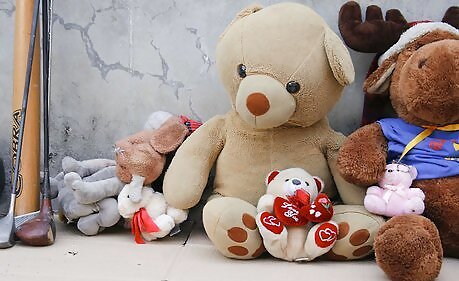
Check auctions. Both online and real time in-house auctions (especially toy auctions) will often have an array of bears that you can browse through and decide to bid on. Remember to keep within your budget and have your highest bid set. Avoid letting your emotions overtake your budget when bidding on bears. No matter how rare that bear, remind yourself if it goes over your highest bid point that there will be some other gem of a bear that you can afford some other time. It may not be the same bear but you'll keep an intact budget.
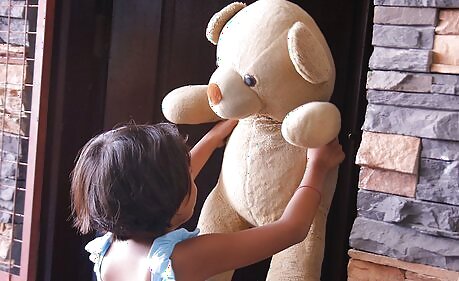
Ask for donations of teddy bears. This may result in bears that you're not so keen on but it is one way to get teddy bears that may have a long history and could be either very sentimental or valuable (or maybe even both). Ask family and friends to donate any of their unwanted teddy bears to you. Leave "wanted" messages on sites such as Freecycle, or any other forum online where asking for freebies is allowed. Place an advertisement in the newspaper asking for unwanted teddy bears for your collection. Be aware that people may expect to be paid if you advertise, so make it clear that it's donations only.
Purchasing a teddy bear––knowing what to look for
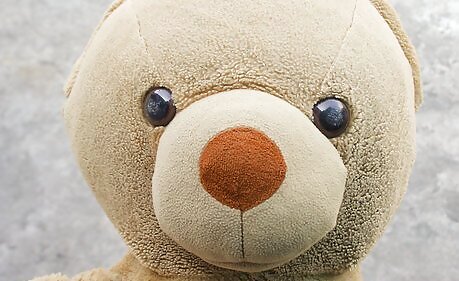
Be wise to the important things about collectible bears. Even if you're just collecting bears based on non-valuable reasons, it's still important to get bears that are worth the money you part with for them. The following section details some of the things to take note of, especially if you are parting with a lot of money for a collector's bear.
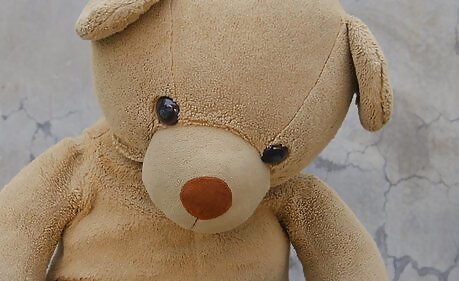
Check the bear's features. The older the bear, the more its features may have somewhat "shifted" over time, reducing its collectible value. This doesn't mean the bear isn't worth having (after all, you can see it needs love), it just means that the price must be fair. Some questions to ask yourself include: What is the condition of the eyes? Are they still in the bear's head, are they scratched or worn, or are they even the original eyes for that bear? Boot-button eyes were the standard for bears pre World-War I, glass from the 1920s (slightly earlier in Britain) and plastic from the 1950s. Replaced eyes should be as close to the originals as possible, showing the right size and color. Do the ears sit properly? Sometimes the original ears were replaced; check the seam lines on older bears, as well as old advertisements for the bear. Is the nose original? If it isn't, is the replacement as close to the original as possible? For those in-the-know, the stitching of the nose is a giveaway of the manufacturer. Know your bear stuffing. If you collect older teddy bears, it pays to know what the bear has been stuffed with. Early bears were stuffed with kapok, making them very light; crunchy bears were stuffed with wood wool. Later stuffings included sub-stuffing, lightweight foam, excelsior, etc. This varies by country. Look for character in the bear. This is subjective but still important. Does the teddy bear's look attract you? Does the bear seem to have a character or personality to you? This can be easier to discern if purchasing face-to-face; online buys will make this aspect harder to work out. Teddy bear or doll hospital repairs (common 50 or so years ago) come with their own charm and history. They don't necessarily condemn the teddy to lesser value, but it does help if you have the full history of that bear, such as a seller's explanation of a visit to a bear hospital in 1952. If you get such explanations, type them up and include them with the teddy bear so that the story is not lost.
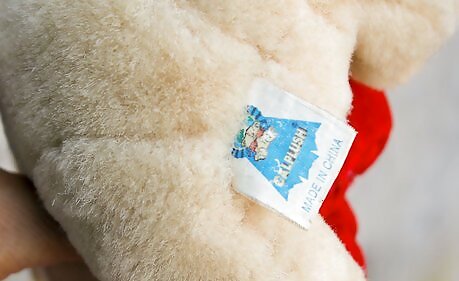
Check the bear's label. Labels, if they are still on the bear, will usually be found in the ear or on the arm of the teddy bear. Early bears didn't always come with labels, and homemade bears often lack them too. Labels can help you to identify the origins and make of the bear but beware of fake labels if the bear is worth a lot. Bear labels can be collectibles in their own right. If you purchase bears made by modern bear artists, with labels attached, keep the labels intact for future identification and value.
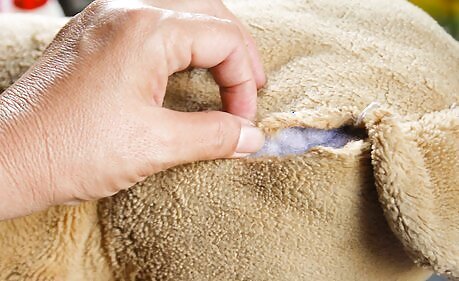
Note the overall condition of the teddy bear. Much-loved bears tend to get holes, then patches and stitches. This doesn't mean they're not worth collecting but it does mean that you should be alert to the possibility that the bear has weaknesses and if it's a vintage collectible, this can affect the value. Look for split seams, tears or rips and poor repair work. These can reduce the value of the teddy bear. Check under clothing on dressed bears, to see what it may be concealing by way of replaced bear parts or repairs. Is it faded? Over time we all fade, bears too. Check the color under joints or areas under clothing and compare to the exposed parts of the bear to see how much fading has occurred. Are the joints working in the bear (if it is jointed)? Limbs may have been stitched back on; check closely. If the teddy bear has a voice-box or squeaker, does it work? More than likely it won't in an old bear, as that's just what happens over time. Beware poor modern replacements. Not all teddy bears are fixable. If the material is falling apart on the teddy bear, it's on its last legs and either avoid it or offer to take it out of pity, for free.
Maintaining your collection
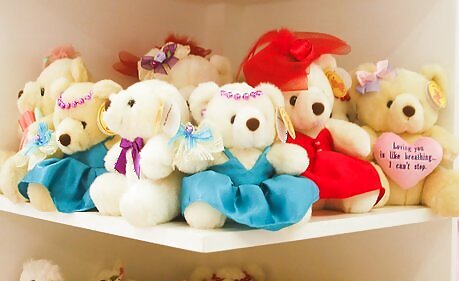
Keep tags in place. If purchasing brand new teddy bears just for the purpose of maintaining a collection, leave all tags in place and keep the boxes or other packaging as well. These can all increase the value of the teddy bear. If you don't have space for boxes, undo them with care and pack them flat somewhere safe from insects and disturbance. Be sure to keep all certificates, "birth" documents and any other related items with the collection too. You might like to consider having a separate folder for these things. Have digital shots of them too and keep these as back-ups in case you lose the paper ones, although they are only for information as they won't increase the value most times.
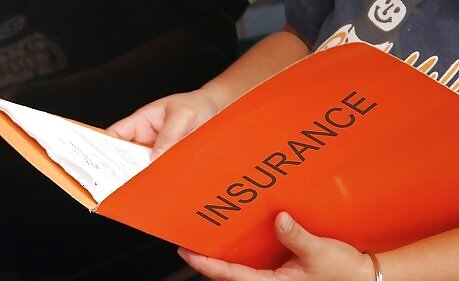
Ensure that the teddy bears are properly looked after. Teddy bear collections are more valuable when the bears forming the collection are kept in as good a condition as possible, given age, make and rarity. Things to bear in mind include: Only surface clean teddy bears, according to the manufacturer's instructions. If a teddy bear needs washing, read the care label first and follow its instructions. Only bears post the 1970s will have such labels, if at all. If the teddy bear is valuable, old or fragile (as opposed to modern, machine-washable teddy bears) and you cannot find suitable washing instructions, seek advice from a reputable toy store or a fabric conservator first. Keep the teddy bears in an environment that prevents their decay. Things that can harm a teddy bear collection include dampness, high humidity, mildew or mold, heat, sunlight, insects, etc. Keep out of the reach of children and pets. Both will see teddy bears as playthings, which they are, but not once they're part of your collection! Display them so as to protect them. See the display section below for advice.
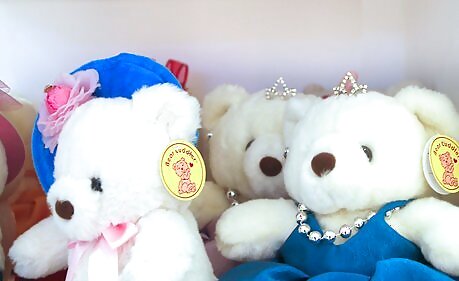
Insure the collection once it becomes valuable. Things happen, such as burglary, fire, flood, your child's marker pen, etc. Getting insurance is a form of at least getting back some of the value of your precious collection should the unthinkable happen. If you're going to sink money into items for collecting, insurance should always be a part of your expenses.
Displaying your collection
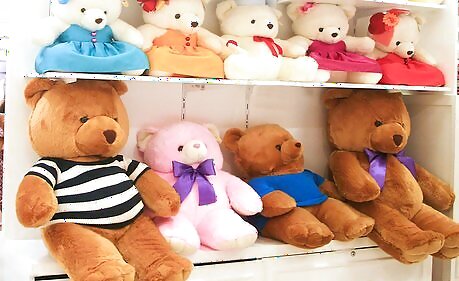
Make space for your collection. The more bears you collect, clearly the more space you need. Unlike stamps, coins or trading cards, bears take up a lot of space over time, so you do need to think about where they can be placed and whether you can spare a corner of a room in your house for placing the bears on display. Once you hit serious collector numbers from around 10 onwards, those bears will begin to take over!
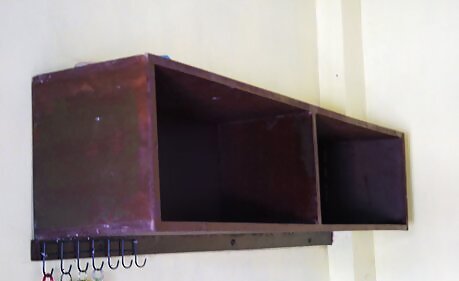
Choose a suitable display case or shelving for the teddy bear collection. Cabinets or display cases behind glass are good, as they help to keep off dust while providing shelves for the bears to be arranged on; the glass also allows for ease of viewing. Shelving can be used too but if it's open to the air, you'll need to dust off the teddies regularly. Lockable display units can be handy to prevent the intrusion of curious, sticky fingers.
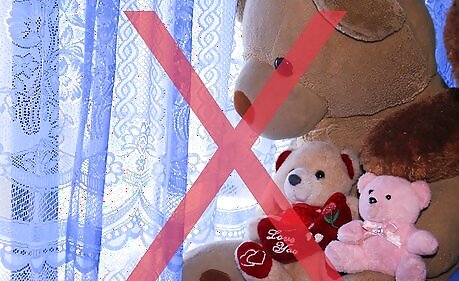
Know what not to do when displaying bears. The following things should be heeded when displaying teddy bears: Do not display them in direct sunlight or near a heat source. Both will cause the bears to fade and/or deteriorate. Ensure that moths do not have access to your teddy bears. There are plenty of moth-ridding solutions you can use in the vicinity of the teddy bears. Do not place any chemical substance on the teddy bears themselves. Keep the bear display area clean. Regularly clean the display area and gently brush away dust from the teddy bears.




















Comments
0 comment